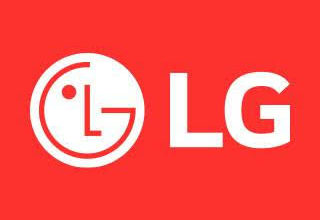Closing Of Nominations For World Bank Group President

The World Bank Group’s Board of Executive Directors yesterday, March 30, 2023, confirmed that as announced on February 22, the period for submitting nominations for the position of the next President of the World Bank Group closed on Wednesday, March 29 at 6:00pm ET.
The Board received one nomination and would like to announce that Mr. Ajay Banga, a U.S. national, will be considered for the position.
In accordance with established procedures, the Board of Executive Directors will conduct a formal interview with the candidate in Washington D.C., and expect to conclude the Presidential selection in due course.
Global Gas Flaring Falls to Lowest Level Since 2010
Progress in reducing gas flaring resumed in 2022, with gas flared worldwide falling by 5 billion cubic meters (bcm) to 139 bcm, its lowest level since 2010, according to new satellite data compiled by the World Bank’s Global Gas Flaring Reduction Partnership (GGFR).
“After a decade of stalled progress, global gas flaring volumes fell in 2022 by around three percent, which is a welcome drop, especially during a time of concern about energy security for many countries. We continue to encourage all oil producers to seize opportunities to end this polluting and wasteful practice,” said Guangzhe Chen, World Bank Vice President for Infrastructure.
Three countries, Nigeria, Mexico, and the United States, accounted for most of the decline in global gas flaring in 2022. Two other countries—Kazakhstan and Colombia— stand out for consistently reducing flaring volumes in the last seven years.
In addition to the overall reduction in flare volume, global flaring intensity—the amount of flaring per barrel of oil produced— also fell to its lowest level since satellite data began, due to the 5 percent increase in oil production in 2022. This indicates a gradual and sustained decoupling of oil production from flaring.
Despite this progress, the top nine flaring countries continue to be responsible for the vast majority of flaring, with Russia, Iraq, Iran, Algeria, Venezuela, the United States, Mexico, Libya, and Nigeria accounting for nearly three-quarters of flare volumes and under half of global oil production.
The satellite data shows that decreased Russian gas exports to the European Union did not increase gas flaring in Russia. Throughout 2022, the European Union significantly increased its liquefied natural gas (LNG) imports from the United States, Angola, Norway, Qatar, and Egypt, and via pipeline from Azerbaijan and Norway. Of these countries, only the United States, Angola, and Egypt have made substantial progress in converting associated gas that would otherwise be flared into LNG exports.
GGFR estimates that in 2022 gas flaring released 357 million tonnes of carbon dioxide equivalents, 315 million tonnes in the form of carbon dioxide and 42 million tonnes in the form of methane. The report also considers the ‘state of the science’ and the uncertainty surrounding how much methane is released from flaring. It finds that methane emissions due to flaring could be significantly higher than previously estimated. For example, if the average flare is just five percentage points less efficient at combusting methane, then globally, the amount of methane released would be three times higher than currently estimated.
“We’re concerned by the amount of methane emitted through flaring, particularly from flares that are not working properly. Methane is a far more potent greenhouse gas than carbon dioxide in the short term. So we need to understand this more and are ramping up our efforts to help developing countries tackle methane emissions,” said Zubin Bamji, the World Bank’s GGFR Program Manager.
About: Gas flaring is the burning of natural gas associated with oil extraction. This wasted gas could displace dirtier energy sources, increase energy access in some of the world’s poorest countries, and provide many countries worldwide with much-needed energy security.
The World Bank’s GGFR is a trust fund and partnership of governments, oil companies, and multilateral organizations working to end routine gas flaring at oil production sites around the world. GGFR helps identify solutions to the array of technical, economic and regulatory barriers to flaring reduction. GGFR, in partnership with the U.S. National Oceanic and Atmospheric Administration (NOAA) and the Payne Institute at the Colorado School of Mines, has developed global gas flaring estimates based upon observations from two satellites, launched in 2012 and 2017. The advanced sensors of these satellites detect the heat emitted by gas flares as infrared emissions at global upstream oil and gas facilities.






